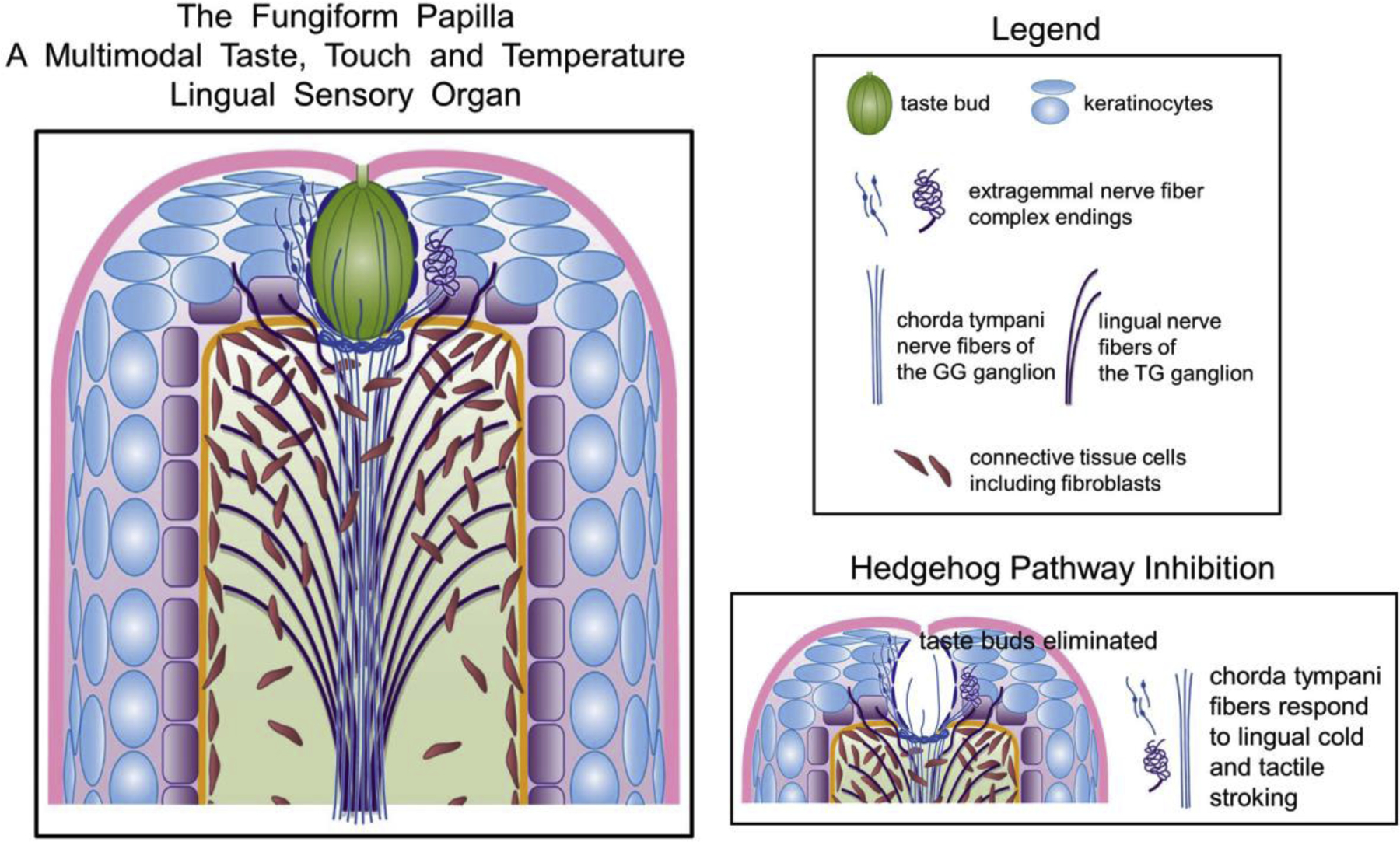Figure 4.

The Fungiform Papilla (FP) multimodal taste, touch and temperature organ. Taste bud cells, innervated by the chorda tympani nerve, respond to tongue stimulation with chemicals. Chorda tympani fibers (thin, blue) also project into the epithelium in extragemmal, complex nerve endings that we propose respond to tongue stroking and temperature stimuli. Lingual nerve fibers (thick, purple) project to lateral FP walls, not into the taste bud, but do project into the epithelium. The lingual nerve fibers are principally committed to responding to noxious, irritant and painful lingual stimuli, not to taste chemicals or light stroking or moderate temperatures. Keratinocytes in the FP epithelium are proposed as potential response elements for lingual stimuli through non-neuronal to neuronal pathways as shown in the skin [52]. In Hedgehog Pathway Inhibition the taste buds are eliminated and the remaining chorda tympani fibers, including extragemmal complex endings, respond to lingual cold and tactile stroking stimuli [5,6,10]. Overall, the FP with chorda tympani and GG innervation is a polymodal receptor organ to detect and transmit information about taste, touch and temperature from one organ, one nerve and one sensory ganglion to central circuits for eating and flavor perception.
